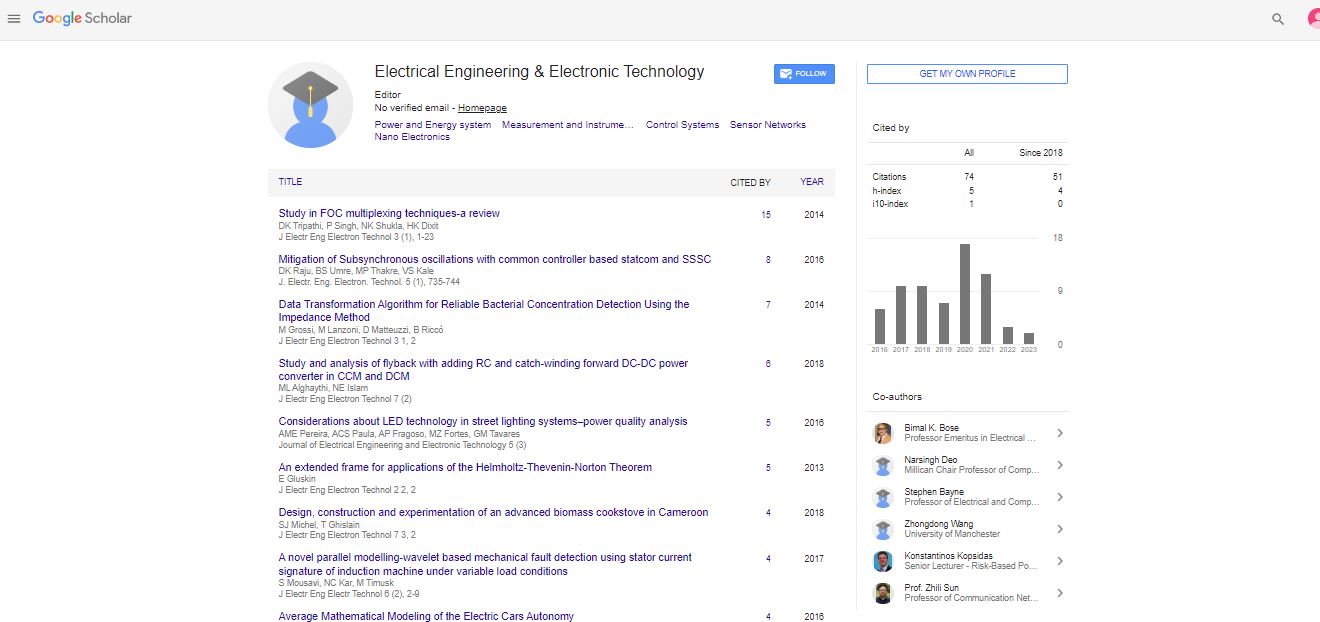An ultrasensitive, rapid immuno-detection platform for bacteria and protein biomarkers
Siu-Tung Yau
Cleveland State University, USA
: J Electr Eng Electron Technol
Abstract
Conventional methods for the detection of bacteria such as ELISA and PCR require a series of culture-based bacteria amplification steps in order to increase the number of the target in the sample to a detectable level. The amplification process makes conventional methods time- and labor-consuming. Detection of protein biomarkers using ELISA is known to provide unsatisfactory sensitivity. Recently, the author has invented Field-Effect Enzymatic Detection (FEED), a novel biosensing technique, in which an external gating voltage VG is used to provide intrinsic amplification of the signal current of an enzymatic biosensor by inducing an interfacial electric field to modulate interfacial charge transfer. The quantum mechanicsbased technique was used to obtain the detection limit of molecular analytes on the zepto-molar (10-21M) level. The novel method has been elucidated in several publications. The author has incorporated FEED with the immunosensing technique to demonstrate a novel detection platform for biomarkers and bacteria. The detected biomarkers include CA125, PSA in serum and AMACR (a novel marker for prostate cancer) in serum and urine. The PSA and AMACR detections were performed at the femto gram/mL level. The two detected bacteria are E. coli and Shigella. E. coli was detected in milk and meat juice with detection limits of the order of 10 CFU/mL. Because of the intrinsic amplification provided by FEED, the detection was performed without the culture-based amplification, resulting in a significantly shortened assay time of 1 hr. In these works, FEED provided ultrasensitivity due to its intrinsic amplification whereas the immunosensing technique provided a high degree of substance selectivity. This detection platform sets up a new approach in bio-detection technology, which provides ultralow detection limit, short assay time and high specificity. It will lead to low-cost detection devices/systems for point-of–care applications. The detection platform will find a range of applications in food safety, public health, environment protection and homeland security.
 Spanish
Spanish  Chinese
Chinese  Russian
Russian  German
German  French
French  Japanese
Japanese  Portuguese
Portuguese  Hindi
Hindi 
